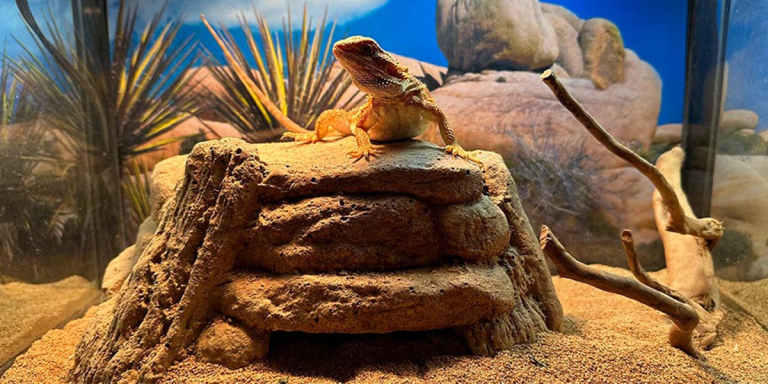You know you want a reptile. Perhaps you’ve read up on the basics of setting up a good reptile habitat. Someone may have even told you about the importance of reptile heating and lighting. However, you’re not entirely sure how to properly light up your reptile’s enclosure, or what they need out of lighting in the first place. With this guide, we hope to illuminate the reasons why reptiles need certain types of lighting, and what to look for when choosing a lamp or bulb. From there, we’ll help you budget out for this aspect of your pet’s care by estimating how much you can expect these lights to cost.
Table of Contents
Why Reptiles Need Light
All reptiles are ectotherms, which means that they receive all of their heat from external sources. They can not regulate their own body temperature, and may freeze to death if not constantly exposed to a source of heat. Reptiles also need exposure to the ultraviolet (UV) spectrum of light to properly metabolize certain vital nutrients such as calcium and D3. Without access to these rays, your reptile’s health may be severely impacted. Health complications that may arise from this include disruptions to their metabolism, poor nutrient absorption, lethargy, and skeletomuscular issues.
Types of Bulbs
There are a few different types of bulbs that are generally used in reptile husbandry. Each of these lights has their own important function in keeping your reptile healthy and happy. Here are a few examples of reptile lights you can expect to come across:
UVA/UVB: Lights that emit this specific spectrum of light are essential for nearly every reptile and cannot be replaced with a regular lightbulb.
Heat Bulbs: Heat-emitting bulbs are important for helping your reptile’s thermoregulation process.
Night Lights: These bulbs will provide a lower intensity light to be used at night. This will help to ensure your reptile will have the appropriate level of UV rays and heat without disrupting its sleep.
Features You Want
When looking for your preferred reptile light, you are going to want to keep certain features in mind that can prove important and useful. Making sure that your bulb is splash resistant, for instance, can make a world of difference in the safety of your setup. Some features could even save you time and money in the long run, such as timers attached to your light that will automatically adjust the temperature or turn your system off at the end of the day.
Considering Your Pet’s Needs
Every reptile species is different. This means that requirements for lighting and heat will vary, even between similar animals and individuals. Some reptiles need these light sources to live, others can thrive on comparatively minimal lighting. It is always important that you conduct thorough research of whichever reptile species you wind up owning in the end. Fortunately, there are many habitat setups available on the market designed to accommodate the needs of a specific animal. As long as you follow manufacturer’s recommendations and instructions, your reptile should remain safe and have its needs met.
Considering Costs
Being a device that runs on electricity, the cost of operating and maintaining your vivarium lighting will vary depending on where you live and how long you’re running your bulbs throughout the day. You can expect a typical 100-150 watt reptile lamp to cost around $10-$25. Running at this level, electricity costs will add up to approximately 1.4 cents an hour. Other variables, such as how large your vivarium is will also have an impact on how much energy your reptile lights are going to need.
While the overall expense of running these lamps may not seem like a lot, it does add up. Budgeting for such an expense can prove to be fairly important in the long run.
Note: These bulbs lose power over time. Eventually, this may cause your pet to miss out on valuable heat and UV rays. If you notice your bulbs starting to dim or give off less heat, you may want to consider replacing them.
Conclusion
Giving your reptile the lighting it needs will be essential to both its mental and physical health. By going the extra mile to make sure you’re giving it the best reptile lights possible, you are taking another step in ensuring that your pet has a long, happy life with you. If you have any further questions regarding lighting and habitat setup, we advise reaching out to an exotics vet or one of the many wonderful people in the online reptile keeping community. By receiving reptile-keeping knowledge from someone that’s more experienced, you have more tools available that will help you succeed in your journey.

